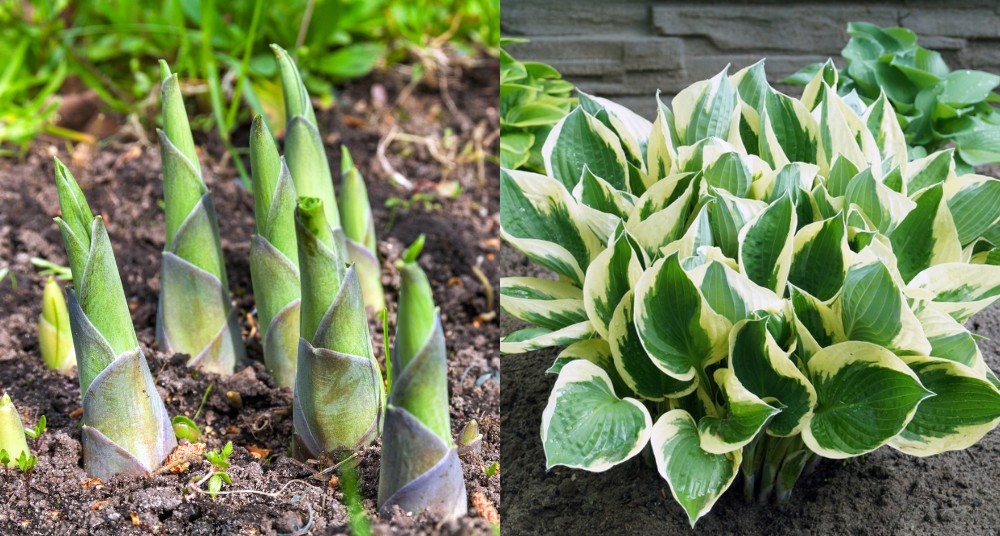Hostas, beloved for their lush foliage and elegant presence, add a touch of charm to gardens near and far. However, maximizing their size and enhancing their aesthetic appeal requires a tailored approach. This comprehensive guide delves into the secrets of cultivating magnificent hostas, transforming your outdoor space into a verdant wonderland.

Image: www.pinterest.com
Understanding Hostas: A Foundation for Growth
Hostas, hailing from the family Asparagaceae, are characterized by their wide, ruffled leaves in an array of hues from deep greens to vibrant chartreuse. Their stately presence brings a tranquil elegance to shady nooks of gardens worldwide.
Types of Hostas
Hostas encompass a vast array of cultivars, each boasting unique leaf shapes, sizes, and textures. From the dainty ‘Blue Mouse Ears’ to the massive ‘Empress Wu,’ there’s a hosta to complement every garden design.
Ensuring a Thriving Environment
Exceptional hostas demand meticulous attention to their environmental needs. Soil composition, light availability, and proper watering techniques play pivotal roles in fostering their growth.

Image: thcsnguyenthanhson.edu.vn
Soil Preparation: The Foundation for Vigor
Hostas flourish in moist, well-drained soil enriched with organic matter. Amending your garden bed with compost or peat moss provides essential nutrients and improves drainage. Additionally, ensuring a pH level between 6.0 and 7.0 creates an optimal environment for growth.
Light Exposure: Balancing Sun and Shade
Hostas thrive in partial shade, receiving approximately six hours of indirect sunlight daily. Excessive sun exposure can scorch leaves, while inadequate light may hinder growth. Morning sun followed by afternoon shade often provides the ideal conditions.
Watering Practices: Nurturing Hydrated Foliage
Proper watering techniques are crucial for hosta health. Water deeply and consistently, allowing the soil to dry out slightly between waterings. Mulching around plants helps retain moisture and suppress weeds.
Nourishing Your Hostas: Fertilization and Mulching
Regular fertilization and mulching contribute significantly to the overall health and vigor of hostas. These practices provide essential nutrients and improve soil conditions.
Fertilization: A Boost for Growth
Fertilize hostas in early spring and mid-summer with a balanced fertilizer, such as 10-10-10. Avoid over-fertilizing, as excessive nitrogen can promote leaf growth at the expense of root development.
Mulching: Protecting and Enriching
Mulching around hostas with organic materials such as shredded bark or compost provides several benefits. It suppresses weeds, conserves moisture, and gradually releases nutrients into the soil.
Expert Advice: Unveiling the Secrets of Hosta Cultivation
Beyond the basics, incorporating expert advice can unlock the full potential of your hostas. Consider the following tips for achieving lush, eye-catching foliage:
Choose the Right Variety
Selecting hosta varieties that are well-suited to your climate and growing conditions is essential. Certain cultivars may be more tolerant of sun exposure or drought than others.
Divide Hostas Regularly
Dividing hostas every three to four years rejuvenates plants and encourages growth. Divide plants in early spring or fall, ensuring each division has several shoots and roots.
Control Slugs and Snails
Slugs and snails can wreak havoc on hosta leaves. Employ organic control methods, such as beer traps or slug bait, to minimize damage.
FAQ: Addressing Common Hosta Concerns
Q: Why are my hostas not growing well?
A: Consider factors such as improper soil conditions, inadequate light exposure, or insufficient watering. Pests and diseases can also affect plant health.
Q: Can I grow hostas in full sun?
A: While most hostas prefer partial shade, certain varieties, such as ‘Halcyon’ and ‘Sun Power,’ tolerate more sun exposure.
Q: How can I prevent hosta leaves from turning yellow?
A: Yellowing leaves may indicate over-fertilization, sunburn, or nutrient deficiencies. Ensure proper fertilization practices and provide adequate shade.
How To Make Hostas Grow Bigger
Conclusion: A Flourishing Garden of Hosta Delights
By meticulously following these comprehensive guidelines, you can cultivate thriving hostas that will adorn your garden with an abundance of verdant foliage. Whether you’re a seasoned gardener or a novice enthusiast, these insights will empower you to unlock the full potential of these enchanting plants.
Are you ready to embark on a journey of hosta enchantment? Let us know in the comments below if you have any questions or share your own tips for growing magnificent hostas.







